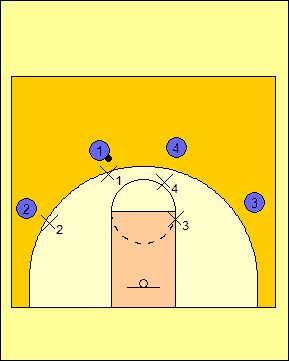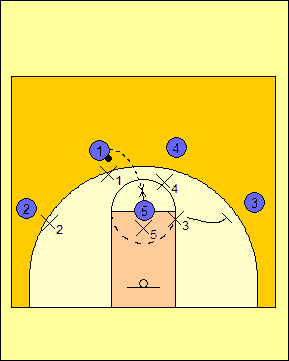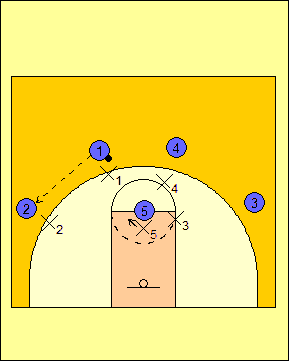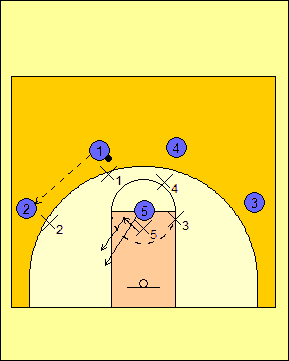|
DEFENDING THE PRINCETON OFFENSE
In 1996, UCLA, who was the defending national champion, was a heavy favorite in
the first round of the NCAA Tournament against an upstart Princeton team that
ran an offense incorporating many difficult-to-defend offensive principles.
What followed was a shocker as Princeton defeated UCLA with an offense for which
UCLA had no answers.
In the aftermath of that game, coaches all across the United States wanted to
know more about the system that had defeated a seemingly top-notch team.
Because of the spread of the Princeton Offense and its success at many different
levels of basketball, many coaches are looking for ways to defend this offense.
This article will cover how to defend the Princeton Offense using man-to-man
defense. Most teams will play man-to-man defense against the Princeton
Offense because that is the base defense and it allows for better coverage of
backdoors and the three-point shot. This article will not cover how to
defend the Princeton Offense using a zone defense.
Adjustments to Man-to-Man Defensive Principles
Most teams like to play overplay denial one pass away while other teams like to
play on-the-line/up-the-line. However, both of these approaches can lead
to the defense being beaten on backdoors. To remedy this, the first
adjustment to make is to have the defensive players one pass away play between
their man and the basket (Diagram 1). Defense more than one pass away does
not change.

Diagram 1 |
The second adjustment we want to make is how we play the post.
There are times when the Princeton Offense plays with a high post.
In Diagram 2, the defense is shown when the offense is in a 2-3 high
alignment. What we want is for the center's defender to play this
one from behind when the ball is above the top of the three point line
extended. This will force the center to catch outside of the lane.

Diagram 2 |
When the ball is passed from the guards to the forwards at the wing, we
then get into a denial position. The center can either stay in the
high post area or move to the ball-side low post. In Diagram 3,
the center stays in the high post and X5 moves into a three-quarters
denial taking the low side.
Diagram 4 shows the center going to the low post. When this
happens, we have the same move as in Diagram 3, but we want X5 to stay
in front of the center and play a high three-quarters denial.

Diagram 3 |

Diagram 4 |
On the guard-to-forward pass, we never want the ball to be caught at the wing.
The reason is that the post entry becomes easier if the center is able to post
up between the ball and the basket. To prevent this, we work to get their
forwards to catch the ball above the free throw line-extended to prevent this
(Diagram 5).

Diagram 5 |
What Else to Cover
When getting ready to play a team that runs the Princeton Offense, you should do
most of your work from shell defense. The type of shell drill to work on
is the front-to-cutter so that your players can prepare for basket cuts as well
as perimeter fill and replace.
In your breakdown drills, you should also cover post splits, UCLA cuts, Hawk
cuts, and v-cuts so that your players are ready for these maneuvers. Also,
in having watched Louisville run their version of the Princeton Offense, you
will also need to work on side and middle ball screens so that your players can
be ready to face them.
RETURN TO MEMBERSHIP AREA
© 2010-2017 Alan Peel Enterprises
|